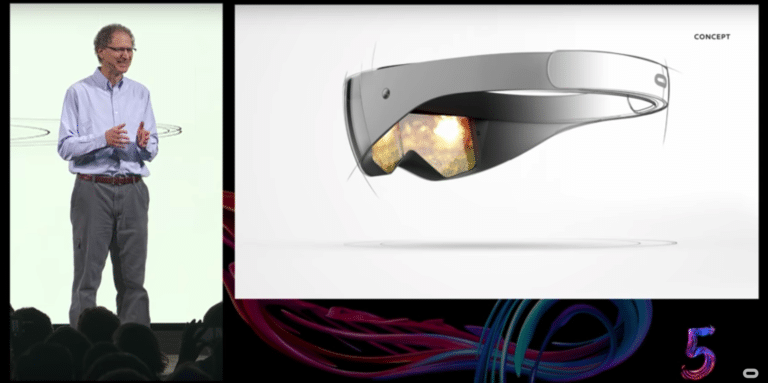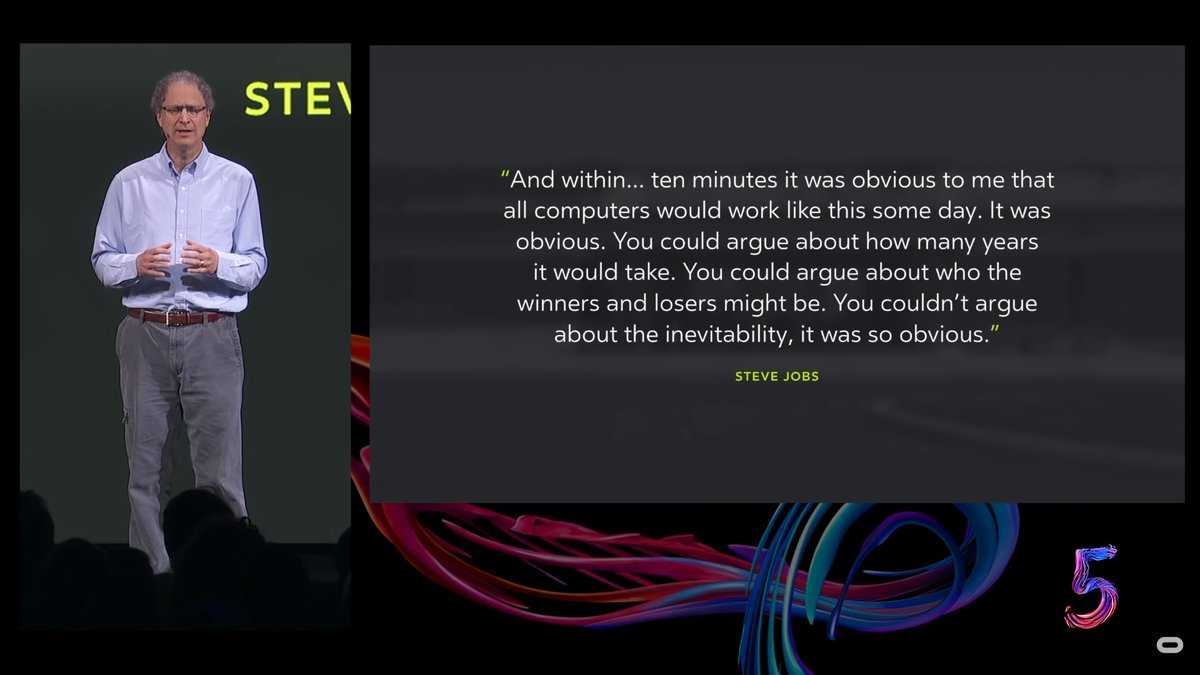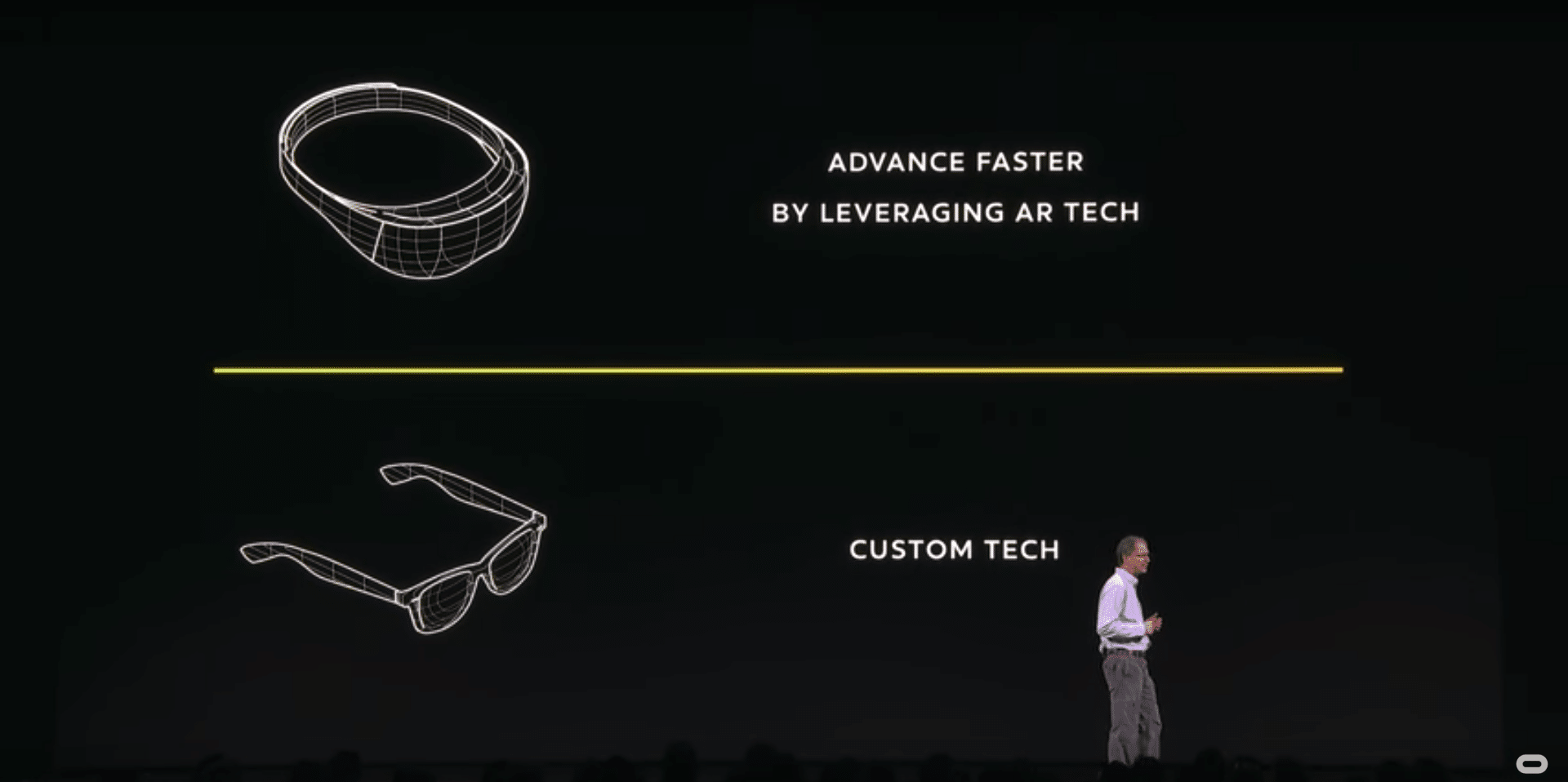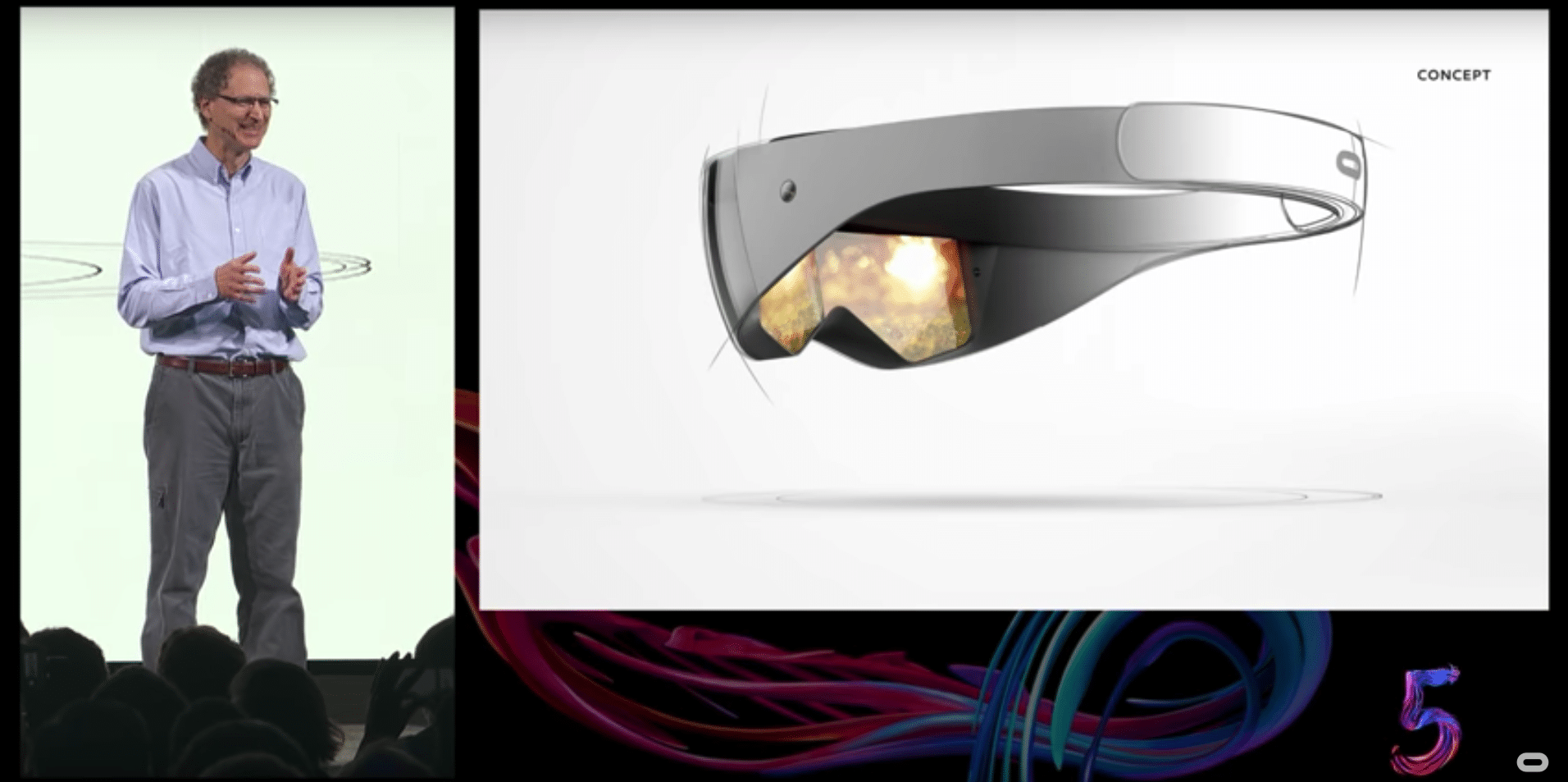
XR Talks is a weekly series that features the best presentations and educational videos from the XR universe. It includes embedded video, as well as narrative analysis and top takeaways. Speakers’ opinions are their own.
VR’s progression is a moving target. Most of the industry undershot its go-to-market timeline, and continues to recalibrate projections. Mark Zuckerberg did so at OC5, followed by a deeper dive from one of the industry’s best visionaries and realists: Oculus Chief Scientist Michael Abrash.
In his now-famous predictions session at the annual Oculus Connect, he’s been predicting VR’s technological progression for a few years. And now, with several predictions under his belt, there’s enough material to grade and recalibrate. And his past predictions are mostly on track.
“I think most of what I talked about will be in consumers hands a year later than I thought — four years from now rather than three,” said Abrash (video below). “But apart from that, not only are the predictions still on track it’s actually starting to look like I underestimated in some areas.”

Abrash notes that barriers are mostly technological. He poses that if the dream VR headset or AR glasses were available today — lightweight, high resolution, wide field of view, etc., it would be a no-brainer commercial success. Demand isn’t the issue.. the technology just isn’t there.
“If those glasses existed today, we’d all be wearing them,” he said. “We really will be wearing those AR glasses and working and connecting in VR before too long. There’s just one minor obstacle: the technology that would allow most of that to happen doesn’t yet exist… but it will.”
Here he invokes a Steve Jobs quote about the first time he saw the graphical user interface at Xerox PARC. He new right away that this would be the future of computing. One could argue about winners and losers, but not the tech’s inevitability. This is Abrash’s same view of XR today.

As for the predictions themselves, they’ve been covered extensively elsewhere since the OC5, and you can watch the full video below for a direct rendition. But we will highlight a few-high level themes that represent important trends, such as the interplay between VR and AR.
Specifically, Abrash believes that AR and VR will converge in the long term, when hardware becomes sleek enough for an all-day, socially-accepted wearable to carry both modalities with high-end specs. But until then, hardware will diverge, and AR could actually drive VR innovation.
This is because VR has advanced by utilizing off-the-shelf display technology, such as what’s already been innovated for mobile devices and other displays. But AR requires more nuanced hardware innovation that has to be designed and built from scratch, thus forging new ground.
“VR can advance farther and faster by leveraging AR technology,” he said. “No off-the-shelf display technology is good enough for AR, so we had no choice but to develop a new display system. And that system also happens to have the potential to take VR to a different level.”

AR & VR will also converge, at least in software, with mixed reality (MR). Of course, MR is a term that’s thrown around a lot and has accumulated many meanings. But Abrash is referring to the ability to scan surroundings and bring real world geometry and object renderings into VR.
In other words, just as AR fuses graphics on the real world, Abrash’s near-term view of MR is the opposite — bringing real world items into immersive graphical (VR) experiences. He argues that the latter will be easier in the near term, given more control over the UX and more pixels.
“Mixed reality in VR is inherently more powerful than AR because there’s full control of every pixel rather than additive blending,” he said. “The truth is that VR is not only where mixed reality will first be genuinely useful, it will also be the best mixed reality for a long time.”

The time horizon for true mixed reality — when AR and VR will converge optimally in the same hardware — is more like 20 years away says Abrash. Until then, they’ll have separate hardware, but will still provide lots of utility, with real market value and scalability in the nearer term.
“At the first Oculus Connect, I told you VR was going to change the world,” he said. “Although we’re not there, I’m more certain than ever it will happen. VR and AR are together going to replace PCs and mobile as the primary ways humans interact with information and with each other.”
See the full presentation below, coded to start at the right point for Abrash’s segment of the OC5 keynote.
For deeper XR data and intelligence, join ARtillry PRO and subscribe to the free ARtillry Weekly newsletter.
Disclosure: ARtillry has no financial stake in the companies mentioned in this post, nor received payment for its production. Disclosure and ethics policy can be seen here.
